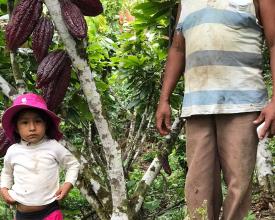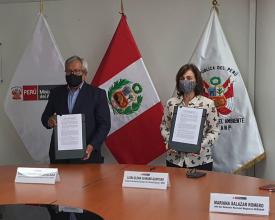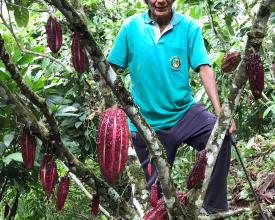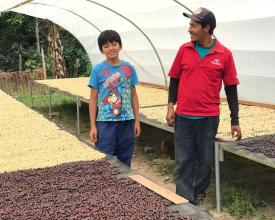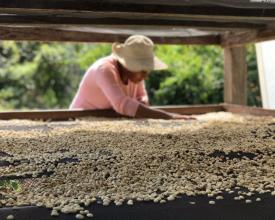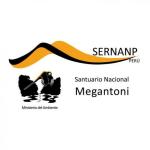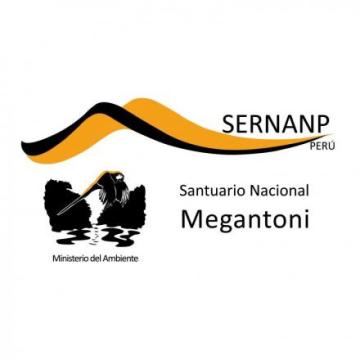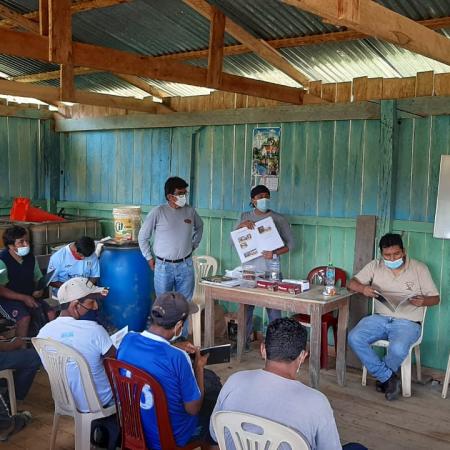
Participation of the population in the effective management of the Megantoni National Sanctuary, through conservation agreements, an effective tool for conservation.
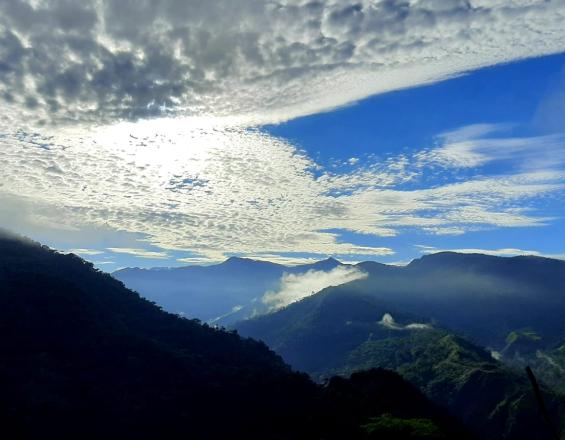
Participatory management is key for the Megantoni National Sanctuary (MNS), which is why it promotes conservation agreements (CA) with producer associations, native communities, and private companies such as La Ibérica (chocolate company) and PERHUSA (coffee exporting company), in order to promote biodiversity conservation in the MNS and boost local development.
There are currently 06 CAs, benefiting 248 families, which in turn protect 58,367 ha of the SNM and 33,459 ha in the buffer zone through community vigilance actions. SERNANP accompanies the process, trains and recognizes the community vigilantes. The companies buy cocoa and coffee at fair prices and use the "Aliado por la Conservación" seal, which certifies that the services or products are produced under a good use and management scheme.
Context
Challenges addressed
- Even part of the population has not become aware of the importance of establishing the protected area and does not show interest in being part of the ACs.
- There is a risk that illegal activities such as selective logging could expand into the area.
- The companies require constant volumes of coffee and cacao and the producers still do not have that capacity due to the incidence of pests, diseases and the low nutrient content of the production soils.
- The pandemic has an impact on the normal execution of activities, such is the case of training processes that are still not constant due to, among other factors, the lack of internet access and the lack of face-to-face events.
- Climate change will cause temperatures to rise by 2°C by 2050, and there will be longer droughts and more intense precipitation, which will have an impact on cocoa and coffee production, among others.
Location
Process
Summary of the process
Participatory management is the basis of the entire process in a protected area, which generates more commitment and articulation among the different stakeholders. These commitments have a greater impact on biodiversity conservation in the Sanctuary, avoiding actions that directly impact the conservation elements for which it was established. In the same way, it becomes visible that economic benefits can be generated in favor of the buffer zone population, especially if there are public-private partnerships in favor of the communities that help improve the area's management image, generate greater public participation and, therefore, commitment and awareness in applying or improving sustainable practices within the framework of a continuous improvement process.
Building Blocks
Participatory management through agreements
The involvement of agricultural associations and native communities in the buffer zone has made it possible to generate economic benefits for the associations and to protect the SNM through community vigilance.
Enabling factors
- Farmers perceive an improvement in their income, which ratifies their commitment to contribute to the Sanctuary's conservation.
- They are constantly participating in the management committee because they now understand the importance of being involved in the area's planning, which is why they want to be part of the process to update the area's Master Plan.
Lesson learned
- Environmental governance is only promoted with effective participation in decision making, considering the participation of local stakeholders. In the case of conservation agreements, not only the economic impact on the population was sought, but also how they perceive the benefits of voluntary collaboration among stakeholders, the acceptance and progressive change of attitude regarding the establishment of the area and the leadership of SERNANP.
Biodiversity conservation
Conservation agreements allow establishing commitments in surveillance and control activities through community surveillance, helping to conserve the SNM and at the same time reducing financial gaps for this purpose.
Enabling factors
- The benefits that can be generated through the agreements help establish commitments to support biodiversity conservation strategies in the Sanctuary and its buffer zone.
- Ongoing communication with the associations and communities provides information on the entry of third parties that want to carry out illegal activities.
Lesson learned
- The effort to produce cocoa sustainably has an impact on conservation actions at the landscape level and has great potential for expansion, as conditions have been created that can serve as a model for diversification of production.
- It has been essential to build the capacity of the SNM's personnel, especially in terms of how agricultural production aspects are linked to the conservation of the area.
Financial sustainability
The head of the area seeks to support the sustainability of the productive activities of the populations through the incorporation of actors such as private companies that pay fair prices for the products, as is the case with cocoa and coffee.
Enabling factors
- La Iberica is expanding nationally and aims to reach international markets.
- There is a growing trend for the consumption of products that come from conserved areas.
- The "Ally for Conservation" brand gives La Iberica an added value (differentiator) to its products because they come from PNAs.
- The business model between the company and the farmers allows for direct negotiation with delivery volumes at fair and stable prices throughout the year, which makes the win-win model possible.
Lesson learned
- SERNANP with the brand "Ally for Conservation" supports products that are sustainably generated by small farmers and businesses from protected areas, this plus has encouraged interest in the company and population because it is a differentiating element that impacts economically for the benefit of the certified producer, helping to facilitate the processes and spaces for greater participation of the local population.
- The agreements began to be implemented at the beginning of 2020 and the context of the pandemic affected some of the goals set, especially in the volumes of cocoa production offered and its transportation. It also affected the articulation and communication between the producers, the company and SERNANP, as the lack of internet in the production zones became more visible.
Impacts
Through the commitments made by the producers' associations and communities, community vigilance contributes to the conservation of the MNS.
Communal surveillance allows the area's management to cover financial gaps in surveillance activities and to know more quickly where threats due to illegal activities are located through early warnings.
Strengthening the capacities of the population in the sustainable production of chuncho cacao, a native species, and coffee, with resilient practices, not only improves production, but also contributes to climate change adaptation.
The SNM contributes to the growing positive perception of the population towards the area because farmers are improving their income from the sale of cocoa and coffee.
The constant participation of the producers' associations in the management committee is due to the fact that they now know the importance of being involved in the area's planning processes.
The progressive empowerment of the producer associations is related to their vision of the future, considering their interrelationship with the protected area.
Beneficiaries
248 families from CCNN Sababantiari and the producer associations of José Olaya, Madre Selva-Lacco Yabero (Quellouno), Sanirito, Pongo de Maynique-Chinguriato, Ivochote (Echarate) who sell their coffee and cocoa production at fair prices.
Sustainable Development Goals
Story

The Madre Selva producers' association was the first association with which the SNM signed a conservation agreement. This initiative was promoted by its president, Mr. Florencio Mamani, who in search of better income from the sale of his products, especially cocoa, approached the area's headquarters to obtain the "Ally for Conservation" seal, a mechanism under which sustainable products from a NPA or its buffer zone are certified.
With the alliance between La Iberica, SERNANP and the association, their cocoa had a commercial offer with a substantial improvement in prices. In the first year, improvements in the phytosanitary aspect of production were considered and farmers committed small volumes of high quality for sale, then due to the pandemic context, the agreement almost did not continue due to the fall in sales of La Iberica's products, the closure of roads and markets, sowing uncertainty in the viability of this model. A few months later, after the economic activities were resumed, the dialogue was resumed and the sale of a second volume of cocoa was finalized. Currently the association is motivated, stronger, the commitments were reaffirmed and the vision and effort of Mr. Florencio is beginning to bear fruit.


